Traveling
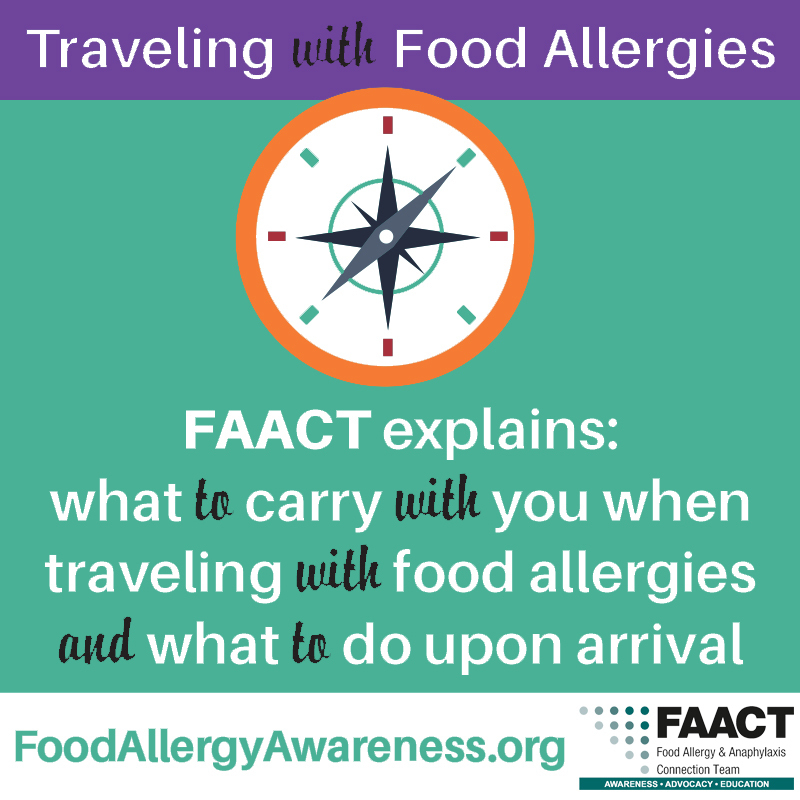
Traveling with Food Allergies
Traveling can be a wonderful experience for families to share and create memories that can last a lifetime! Traveling with food allergies does take some extra planning, but the reward of a safe vacation and quality time spent with family members are worth the extra effort.
This section offers a basic overview of traveling with food allergies.
We also created a handy checklist to assist you when preparing for travel. The checklist includes a full list of travel tips and reminders.
Download FAACT's Traveler’s Checklist for Those with Food Allergies
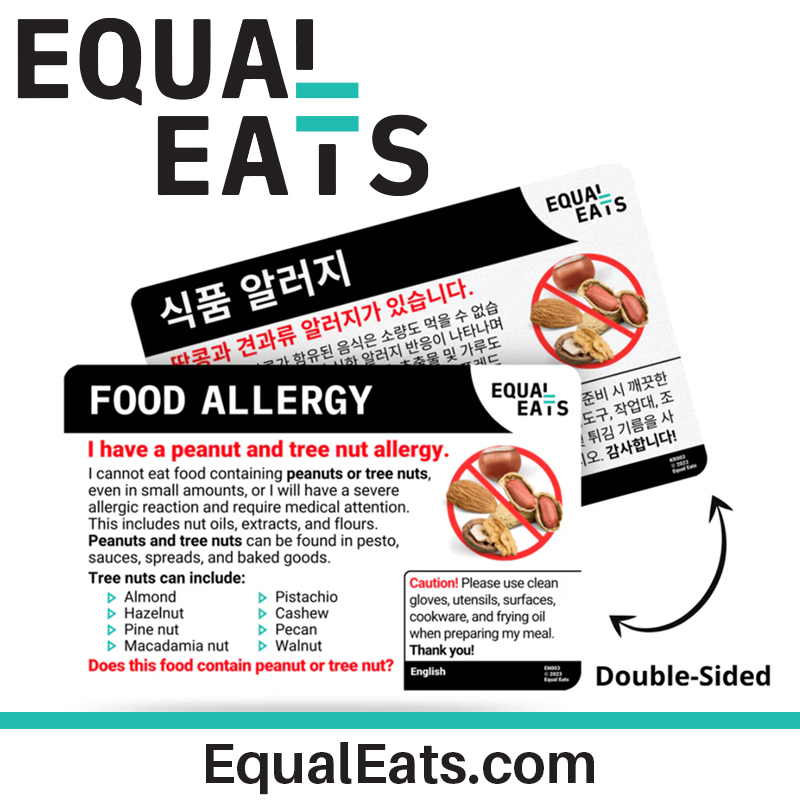
What is an allergy translation card, and why it should be a staple in your passport case?
Ever been in a situation where you mentioned your food allergy at a restaurant, and the waiter looked at you like you were speaking greek?
Now imagine being in Greece and trying to explain your food allergies in English. Not much different. Many in the service industry around the globe have a good understanding of English, but it is still typically their second language. An allergy translation card helps ensure nothing is left to chance, and no vital, potentially life-protecting information falls through the cracks.
Equal Eats allergy translations cards list your exact allergies and avoidances in a foreign language. They offer pre-set cards for one-specific allergy, or customized food allergy cards for those with multiple allergies.
Equal Eats provides solutions and tools to help people living with dietary restrictions communicate with the food service industry effectively, accurately, and conveniently - in OVER 50 different languages!
For any U.S. and international travel, be sure to visit Equal Eats
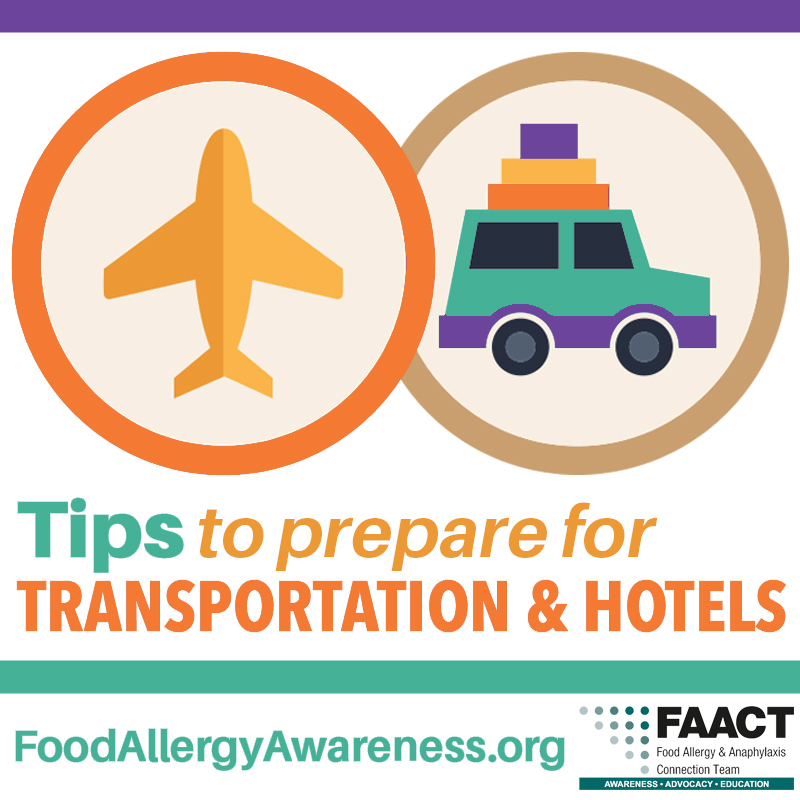
Transportation and Hotels
When preparing for a trip, contact your travel agent, travel provider (e.g., airline, cruise ship, bus, train) and hotel to notify staff of your food allergies and specific needs.
This includes all requests, such as:
- Special meals
- Rooms with kitchenettes, etc.
Inquire about their policies and willingness to assist, such as:
- Allowing you to pre-board a flight to wipe down seats, armrests, and seatbelts
- Making overhead announcements, etc.
Checking with different airlines and hotels to ensure options are available for you and your family can help you start your trip with confidence!
During any trip, be prepared for unexpected situations and always have on your person (or close by) the following items:
- Medical IDs
- Hand wipes
- Extra medications
- Safe snacks
- Emergency plans
- Contact numbers
- And other necessary items
A full list of recommended items can be found on FAACT’s Traveler's Checklist
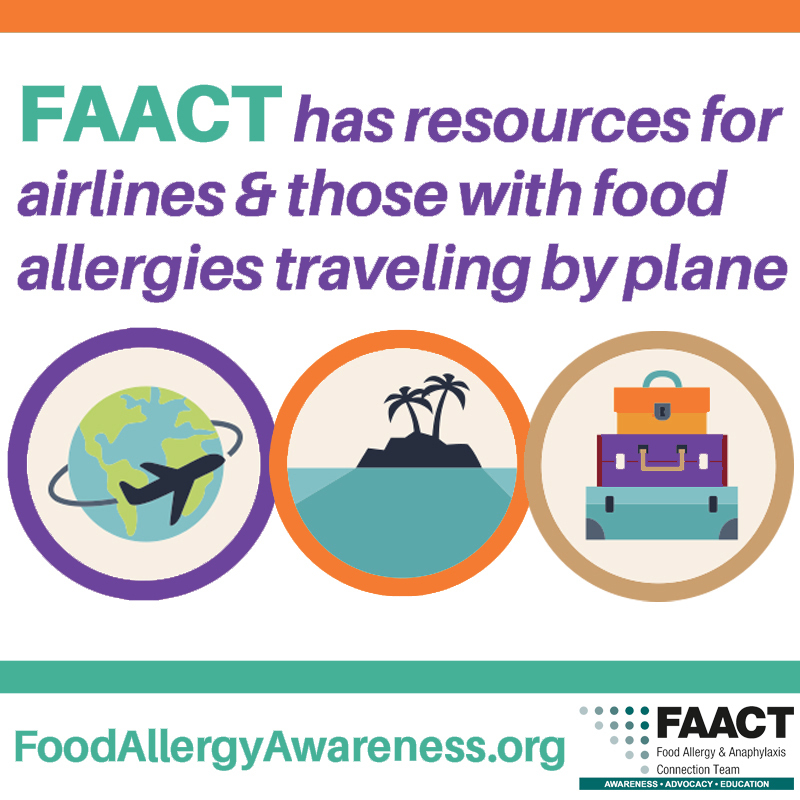
Airline Travel
We often hear that airline travel is a major concern for food-allergic individuals and their families, which can increase anxiety levels for all parties involved. A study identified steps airline passengers can take that may prove beneficial in helping to reduce the risk of an in-flight reaction to peanuts and tree nuts:
- Make accommodation requests to the airlines
- Wipe personal tray tables
- Avoid the use of airline-provided pillows and blankets
- Request that other passengers not consume peanut/tree nut-containing products
- Do not consume airline-provided foods
Practicing avoidance measures like these and acting quickly in the event of an emergency may provide a safer in-flight experience.
Other best practices to discuss with your medical provider when traveling by air include:
- Always carrying at least two (2) auto-injectable epinephrine devices on your person when traveling
- Ensuring easy access to additional medications
- Notifying flight crews immediately of any signs or symptoms of a reaction
- Pre-boarding to wipe down seats, tray tables, armrests, seat belts, and surrounding areas
- Bringing safe foods and snacks on board for your family

Emergency Preparedness
Being prepared with an action plan, medications, and the confidence needed to handle any emergency will help reduce anxiety when traveling with food allergies.
Always carry two (2) auto-injectable epinephrine devices and other required medications, a medical note from your doctor (on medical needs/mediations), back-up prescriptions, insurance cards, emergency contacts, and copies of your Allergy & Anaphylaxis Emergency Plan signed by your doctor. Carry medication in original containers with prescription labels attached (or a high quality copy of this, in case you are asked). Check with your airlines or other transportation departments for their policy regarding your need to carry medications onboard, and do so prior to arriving at the airport or gate. Do not check medications in luggage, since unexpected situations can occur (e.g., lost or damaged luggage, extreme temperatures, aircraft changes, etc.).
Upon arrival at your destination, make sure everyone in your party understands emergency procedures, including how to contact local emergency services (e.g., 911 in the United States, 999 in Asia, 111 in New Zealand), by what method emergency services will be called (e.g., local prepaid cell phone, hotel receptionist), and where emergency medications will be kept.
Consider practicing emergency procedures as you would a fire drill:
- Who will administer epinephrine and for what symptoms would you administer it?
- Who will contact emergency services?
- Who will ride with the individual to the hospital?
- Who will follow with back-up medications, emergency contact information, safe foods, and insurance cards?
- How will others get to the hospital and how will they pay for transportation?
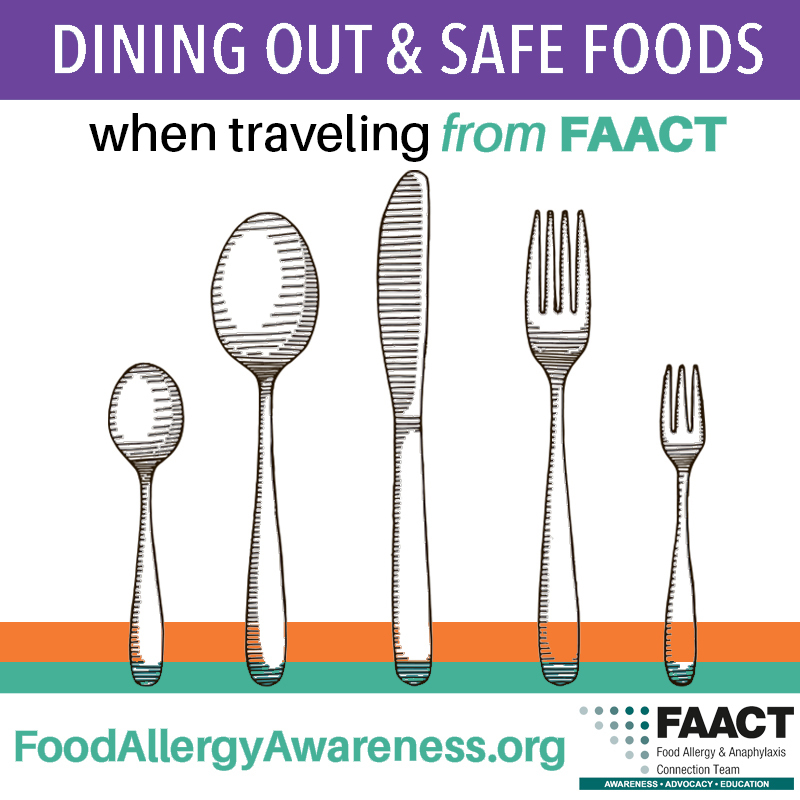
Dining Out and Safe Foods
Call restaurants and hotels, prior to travel, to determine which establishments can safely accommodate your dining needs. Download FAACT’s “Dining Out” handout to assist you in choosing a location. Note acceptable locations by recording their information on FAACT’s Traveler's Checklist. Always carry emergency medications when dining out and be prepared to act in the event of an emergency.
Local health food and specialty stores are available in most cities. Call ahead to inquire about available products. A local support group at your destination may also serve as a good resource – support groups can provide information on allergy-friendly dining options, specialty stores, and other valuable information when traveling. However, it’s always best to pack your own food, if possible, and confirm all information shared with you.
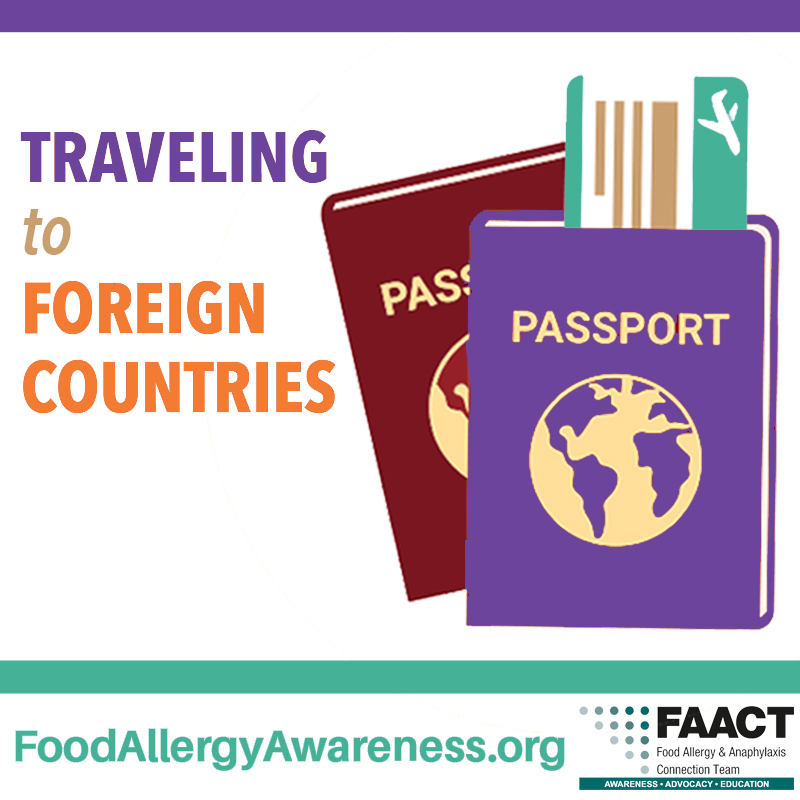
Traveling to Foreign Countries
When considering traveling abroad, research is a must. Foreign travel may increase your risks due to language barriers, unfamiliarity of food allergy management, poor treatment facilities and supplies, and inadequate labeling laws.
Preparation for traveling abroad should include translation cards (both for yourself and for others who may serve or prepare your food), calling ahead to inquire about safe options, having an emergency action plan in place, familiarizing yourself with the country and the culture, and developing a better understanding of the destination language. The ability to communicate effectively helps to ensure that restaurant employees and other key individuals will be able to assist you as needed.
Equal Eats has translation cards available in over 50 languages.
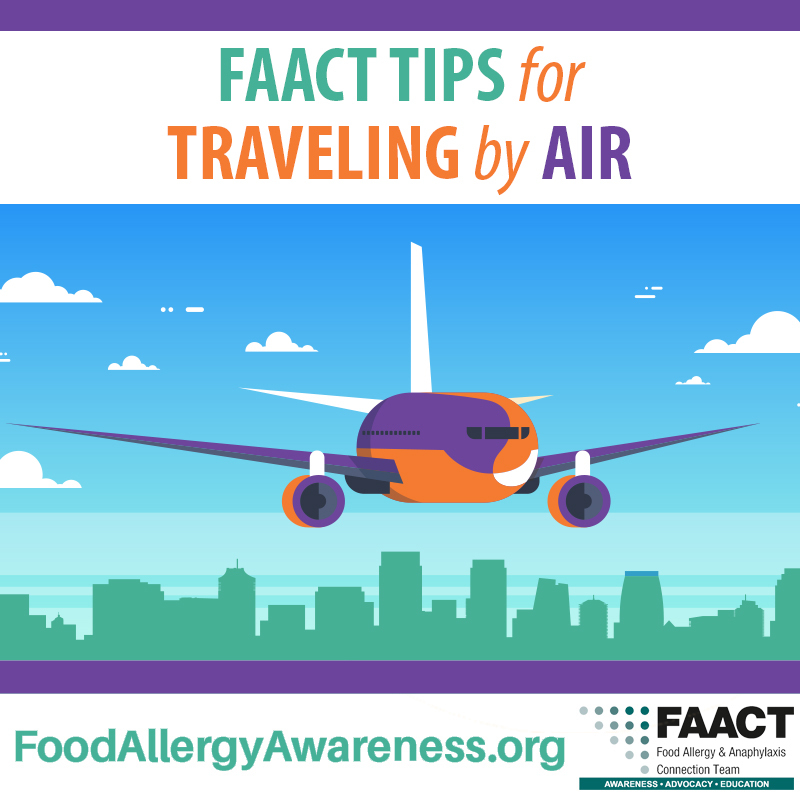
FAACT Tips
-
Booking the first flight of the day can help reduce risks. An aircraft parked overnight has most likely been cleaned more efficiently than mid-day flights, where cleaning crews, gate agents, and crewmembers are rushing to meet departure times. However, there is no guarantee that early morning flights are cleaner or safer than flights at other times of the day.
-
Seatback pockets are a convenient storage area for food and beverages. Never stick hands in seatback pockets where crumbs, dust, and empty packages hide. If you do, make sure a sanitary wipe (not hand gel sanitizer) is available to clean your hands quickly, or use the lavatory and wash with soap and water. Always wipe down all surfaces in your personal seating area, including your seat, armrest, seat belt, tray tables, as well as emergency booklets and airline magazines prior to handling them, since they are stored in the seatback pocket.
-
When traveling by air, notify the lead flight attendant of your allergen upon boarding. Be kind, patient, and friendly. A friendly and appreciative approach (rather than a demanding and upset one) can be more effective in the long haul. However there should not be an expectation that they will help accommodate your needs.
-
Consider taking snapshots of all emergency action plans and insurance cards on your phone for easy access.
Download our posters for having a safer airline experience:

Travel Resources and Other Helpful Links
These resources are informational only and are not intended to be a recommendation or referral. This list is not all encompassing and other resources may also be available. Please call ahead to ensure accuracy and speak to your medical doctor to confirm any travel plans using the resources below.
- Visit FAACT’s “Dining Out” Section
- Policies of large U.S. airlines on the serving of nuts (check airlines for recent updates on listed policies)
- Visit Equal Eats for Restaurant and Translation cards
FAACT’s Traveler's Checklist for Those with Food Allergies Checklist
References
International Study of Risk-Mitigating Factors and In-Flight Allergic Reactions to Peanut and Tree Nut; Matthew Greenhawt, MD, MBA, MSca, Fiona MacGillivrayb, Geraldine Battyb, Maria Saidb, and Christopher Weiss, PhDc Ann Arbor and Battle Creek, Mich; and Hornsby, New South Wales, Australia Discussion: 8 Risk Mitigating Behaviours

